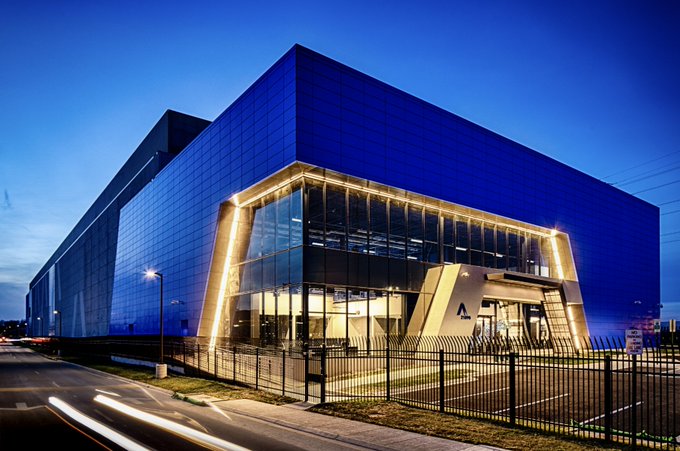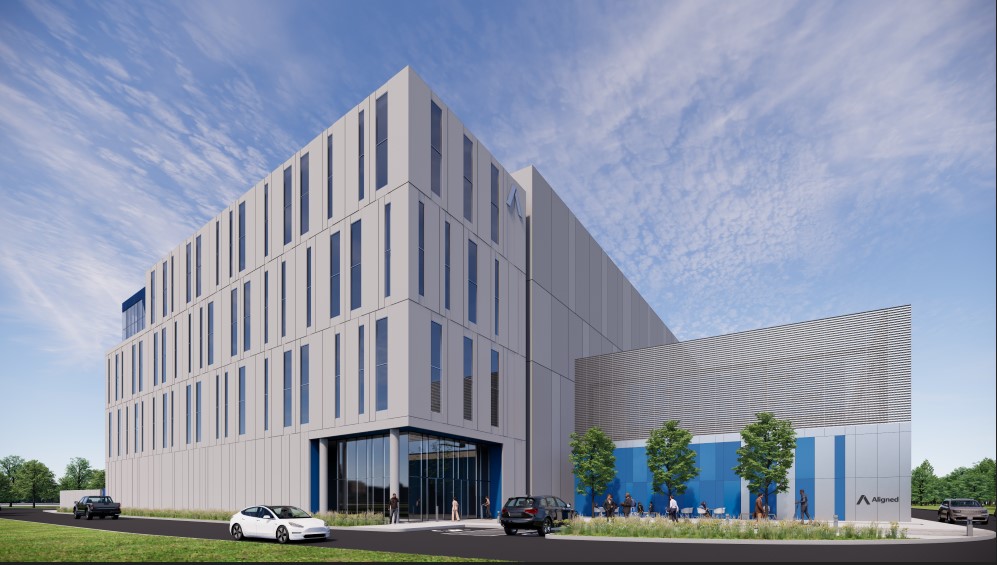The data centers of Loudon County and other local jurisdictions are so prominent that they’ve actually been gifted a nickname: Data Center Alley.
The region’s data center presence has exploded as of late with the rise of devices, cloud services and local tech needs. The Northern Virginia Technology Council (NVTC) even found that the region’s total data center capacity has doubled in size between 2018 and 2021.
Moreover, for every job in a Virginia data center, NVTC found that 4.1 additional jobs are supported in the economy. The organization estimated that in 2021, data centers were, directly and indirectly, responsible for about $174 million in state revenue and $1 billion in local tax revenue.
Josh Levi, president of data center trade association Data Center Coalition, stated that data centers have been pivotal in building the DC region’s tech ecosystem.
“Data centers tend to bring and cultivate ecosystems,” Levi told Technical.ly. “The multi-tenant facilities bring in tenants, they bring in companies that might not otherwise be located here.”
So, where’d they all come from?
A data center star is born
The local industry actually began in the 1990s with the establishment of MAE-East, the first internet exchange point, which lets providers exchange data. Three of its first five locations were in the Virginia cities of Reston, Ashburn and Vienna.
MAE-East’s presence then attracted data centers, like the one Equinix built in 1998, to the region. Virginia Economic Development Partnership (VEDP) President and CEO Jason El Koubi said the Ashburn campus provided an “internet on-ramp” that enabled the geographic focus on data center activity in NoVa.
Today, that proximity to MAE-East helps with providing additional speed and connectivity, and the data center market in Northern Virginia is bigger than the next five largest markets combined. Cumulatively, the investment in regional data centers equals about $126 billion in 2021 dollars, according to NVTC.
“Basically, Virginia got an early start in cultivating this industry and has nurtured the industry along the way and continue continues to expand its presence of data centers,” El Koubi said.
This industry footprint has continued growing thanks to a strong local tech scene, a talent pipeline that specializes in data centers, land availability, proximity to government operations and a competitive cost environment.
What came next?
After getting that early start, Virginia realized it could go even further with the industry. In 2008, the state began offering a tax incentive for data center builds. Data centers that have a minimum new capital investment of $150 million and create 50 new local jobs can receive a sales and use tax exemption on equipment. In 2021, this shifted to a requirement of only 10 employees and $70 million for data center builds in localities with higher than average unemployment and poverty rates.
At the time, Virginia was only the sixth state to establish this exemption, although Levi said that number has grown to 33. The incentive seems to have paid off: According to VEDP data, in 2021, 62% or $6.8 billion of all new investments the funding entity announced in 2021 were courtesy of new and expanding data centers.
Currently, data centers also employ 5,500 Virginians (not including construction workers) 88% of whom work in Northern Virginia. In 2021, Virginia data centers spent $5.4 billion on operational expenses, which are mostly power and staffing.
The industry, which has expanded into parts of Maryland, is also credited for some of the recent influx of big players into DC tech — for instance, Amazon’s HQ2 plans.
“Virginia’s data center industry is one of the key components that established Virginia as America’s East Coast tech capital, or East Coast tech hub,” El Koubi said.

The energy evolution
Data centers have come a long way, even just in the last few years, since their humble 90s origins. One inciting development was the switch to the cloud. In 2010, 79% of data center computing was done in small, traditional computer centers (in other words, the server closet in offices with a bunch of air conditioners). By 2018, about 89% of data center computing was done in these larger, cloud-based data centers.
For the grid, that means that the energy needed for computing is now part of big data centers’ overall roles. But data centers themselves are moving toward a different kind of grid. From the same time period of 2010 to 2018, computing output jumped up to about six times what it was while energy consumption to power that activity only went up 6%. What that means, according to Levi, is that data centers are prioritizing efficiency.
For many, that also means a pivot to cleaner power, including both on-site renewables and purchasing renewable energy from providers. Dominion Energy, the utility that powers the local data center market, has said that it’s working on several solar and other renewable projects that will help power Virginia’s data centers. The change is crucial because data centers are a huge power suck — largely because of the massive amounts of energy needed to keep them cool.
Still, despite these plans, the local industry is encountering another problem: power lines. Dominion said that the state’s data market has grown faster than the utility’s ability to deliver energy, so more transmission and power lines are needed. The industry was moving so fast that Dominion had to pause connecting new data centers.
“We’ve identified the need to accelerate our previous plans for new transmission and substation infrastructure in this area of eastern Loudoun County, bringing it forward by several years,” said Dominion President and CEO Bob Blue on an earnings call earlier this year. “To be clear, we’re not at the limits of our facilities today, but we need to act now to alleviate transmission constraints in the future while serving our customers’ growth in this region.”
This delay is on industry leaders’ minds as data centers keep growing and getting approved. To continue expanding, Levi thinks that the industry needs to keep its eye on the prize by returning to its roots.
“Even as their servers and footprint become more efficient in storing data in smaller and smaller servers and equipment footprints, you see so much additional data generated that you continue to need to build out and expand the size of facilities,” Levi said. “So, I think it’s all the ingredients that went into the success of Virginia’s data center market that you would need to continue to be able to provide that growth.”







